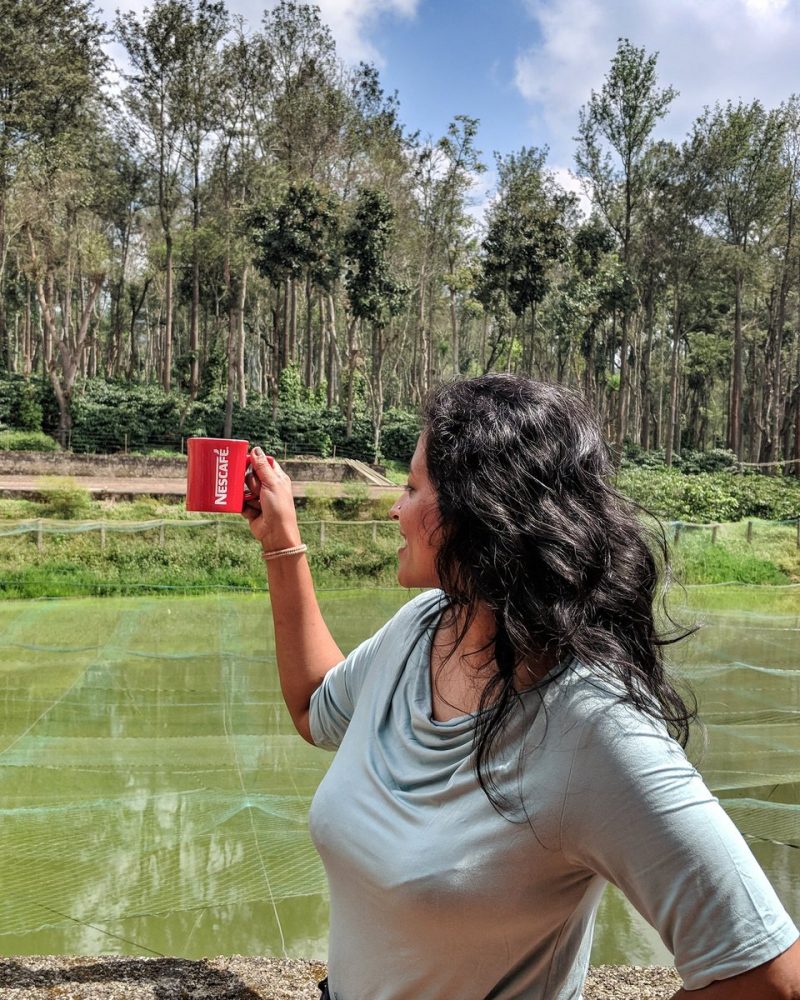
Summary: Celebrating International coffee day – A day spent understanding how coffee is grown, how Nescafé supports the coffee farmer, launch of a new coffee gadget and a coffee tasting session at the sensory lab

A cup of coffee to me is more than just a beverage. It is a moment of calm introspection, an opportunity to connect over conversations or a mental vacation in the midst of a busy day.
When invited for this International Coffee Day celebration to a coffee farm, I was more than eager to learn about the bean to cup journey. Along with the Nestle and Nescafé India team, we visited a farm in Kushalnagar (Karnataka) where we learnt more about how coffee is grown, the good practises, farmer welfare, coffee tasting and more. If you love coffee, read on to know more about all the things I learnt about coffee.
Coffee Demo Farm
Our day started with the visit to the coffee demo farm and training centre.
We learnt about how the coffee seed is grown upto a seedling and then a plantlet stage. This is then planted in the farms under the shade of silver oak trees. There are two main coffee varieties – the Arabica and the Robusta. The latter is a bigger sized plant and the robusta coffee has a stronger flavour as compared to the Arabica. The plant starts fruiting around its 3rd year and can successfully produce fruit for upto 50 years and sometimes even upto a 100 years, although the yield and quality of beans may go down as the plant ages.
I learnt that a single coffee plant can yield around 1.5 -2 kg of beans in one cycle. Some of the newer developed varieties have the capacity to produce upto 5 kg of beans, almost 3x of the current yield.
I recently read a tweet from a friend, who remarked how some vegetables are available in large markets at less than Rs.5 a kilo and how the farmer could stand to make any money given such low prices. I felt similarly when growing lemons at home and how a single lemon took nearly 6 months to fully mature and use in cooking. And how unfair it seemed that it was sold for less than Rs.5. It makes us think about fair trade and whether the farmers are being paid what they deserve for toiling in the sun, braving natural disasters like excessive rain, sky rocketing temperatures or drought, for producing our food for us.
When we were explained about the Nescafé Plan, it felt good to know that the farmers here are being taken care of and given the support they deserve.
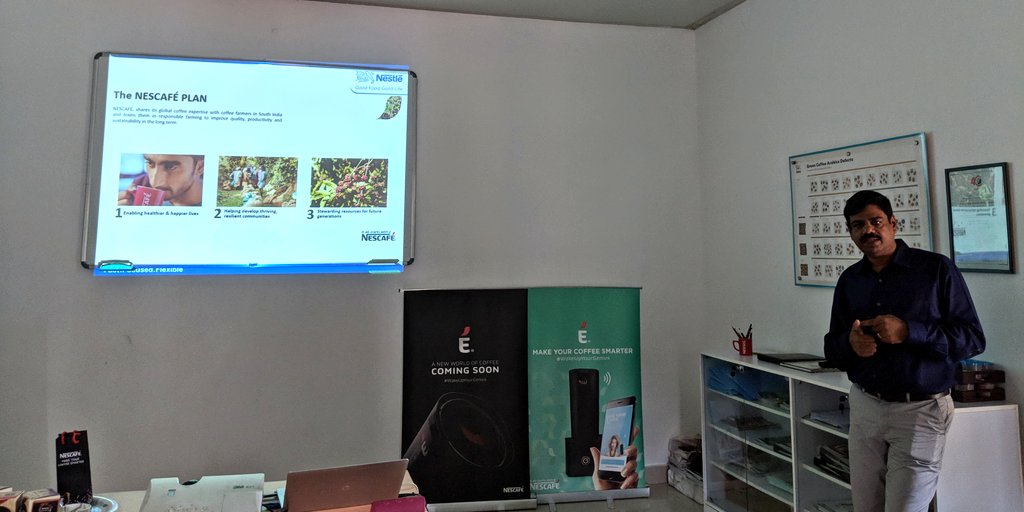
The NESCAFÉ Plan – This is the initiative to share NESCAFÉ’s global coffee expertise with the farmers in South India to improve the quality of yield and productivity from their farms. The other important goals are to promote happier healthier lives for the farmers and their families, providing all kinds of support in agriculture practices, right upto healthcare. The aim is also to develop a thriving community, while sharing the knowledge base and other resources with the farmers.
NESCAFÉ Better Farming practices training sessions is a complete package of solutions to all the issues that coffee farming community is facing in India. They also support farmers in conducting assessments and obtaining certification from the Common Code for the Coffee Community (4C Association), Rainforest alliance and Sustainable Agriculture Network (SAN).
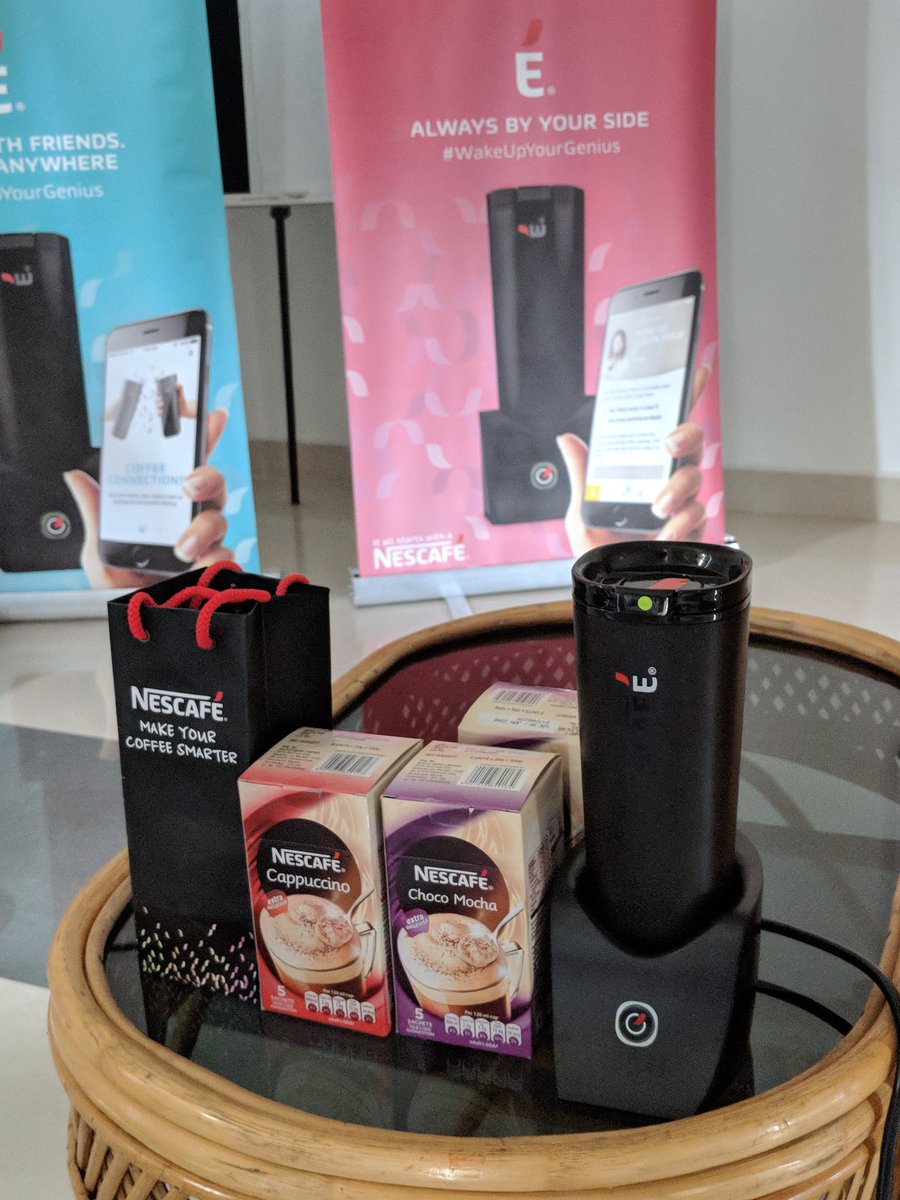
E by NESCAFÉ
The next exciting agenda of the day was the unveiling of the newest coffee appliance on the block. E by Nescafé was launched on the midnight of 1st October for International Coffee Day. This handy device makes your personal cup of coffee the way you like it. Connected to an app via bluetooth (this truly makes it a smart device), it can program the machine to make your regular customised cup or go with any of the other recipes on the app.
It is also good to make your coffee either hot or cold. With an inbuilt frother, this intelligent device can give you a cup of coffee that comes close to a cafe experience. And all this in the comfort of your office desk or home. The appliance runs on electricity and while it can heat up the beverage, for cooling you will need to add ice cubes to the prepared beverage.
Does this sound exciting to you?
Check all details about E by Nescafé online only Amazon above.
To buy it in a store, you can check Croma and Crossword
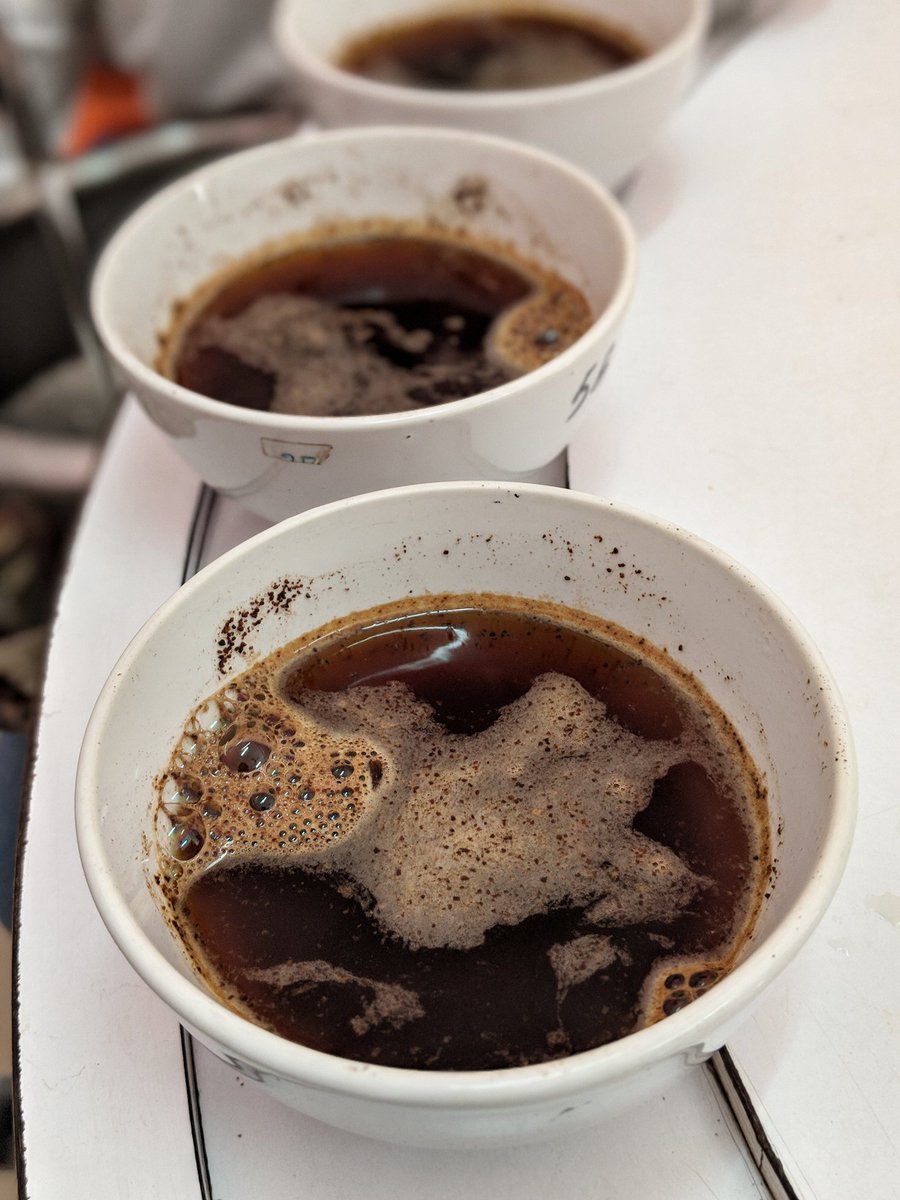
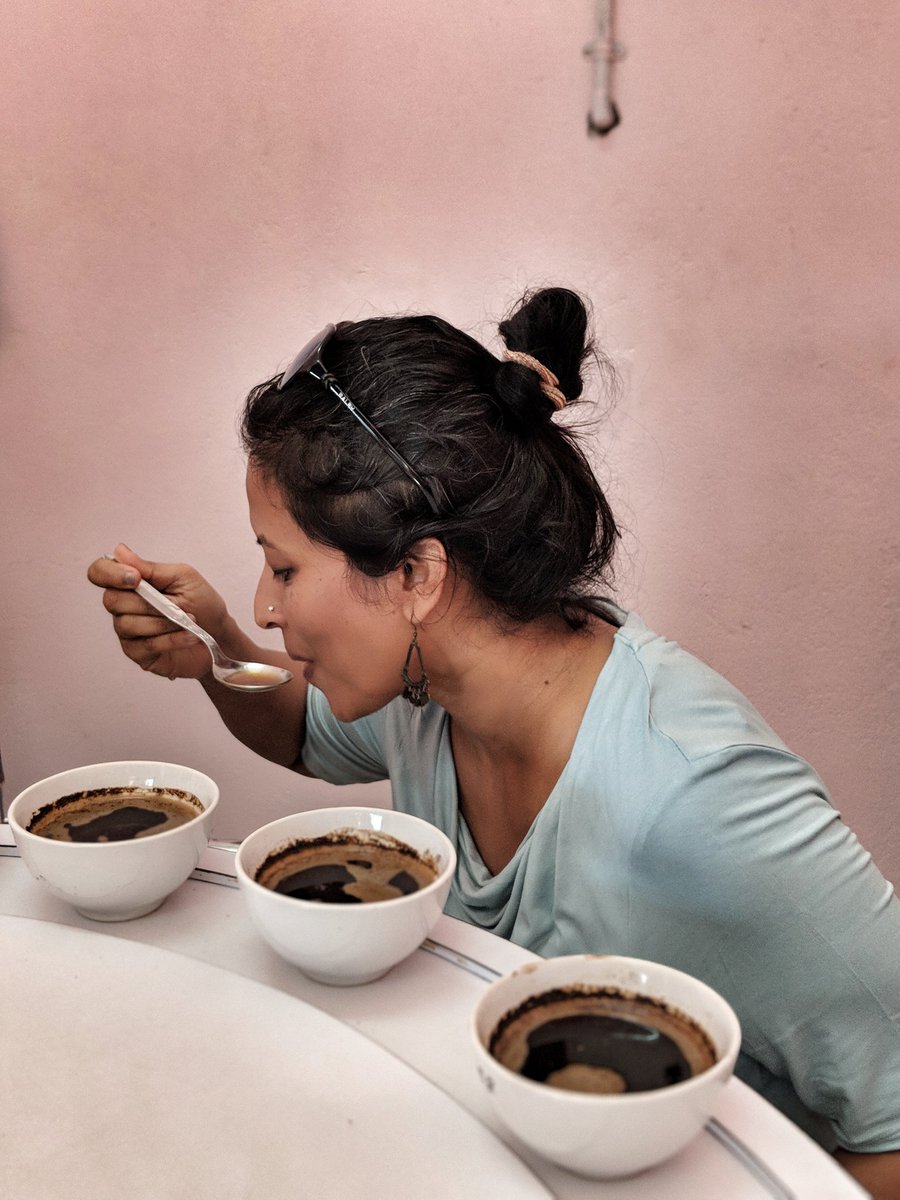
Coffee Tasting
The third and final part of the day was a detailed understanding into coffee tasting. Sample batches of beans are roasted and ground in the sensory lab. Each ground is brewed into 3 cups and each cup passes through a smell and taste test. This is essentially to pick up any unpleasant odours or tastes that can come from any moulded or defective beans.
A coffee taster has the tough job of tasting endless cups of coffee. Coffee tasting expert Mr. Suresha told us that he tasted 170 samples last month, that is 3 cups per sample! The palate is cleaned by rinsing with water between tastings. Sometimes eating neutral flavoured crackers are eaten to clear the palate. Each sample is tested and the details noted regarding the aroma, flavour, acidity, body, presence of any undesirable flavours etc. in a sheet. If you are a coffee lover, you may think what fun to be a coffee taster! But the job of a coffee taster is a rigorous and exacting one.
Check out my Kit shop that lists all my favourite coffee and tea things
More coffee recipes on my blog:
Ultimate Frothy Iced Coffee made using instant coffee granules
Intensely coffee flavoured coffee cake
A few lesser known coffee facts:
- Arabica coffee has 1.2-1.5% caffeine with sweet caramel notes.
- Robusta coffee has 2.2-2.7% caffeine with spicy, earthy notes. This is a harsher more bitter variety of coffee, working better in blends.
- Arabica variant produces less coffee per hectare which is why it is the more expensive variety.
- Coffee is a very water intensive crop. 1 cup of coffee needs around 37 gallons of water to grow and process the coffee beans.
- One coffee plant can live from 50-70 years and sometimes even upto a 100 years, growing upto 32 feet tall.
- Coffee blossoms look like big jasmine flowers and even have a similar strong sweet smell.




Leave Your Comments